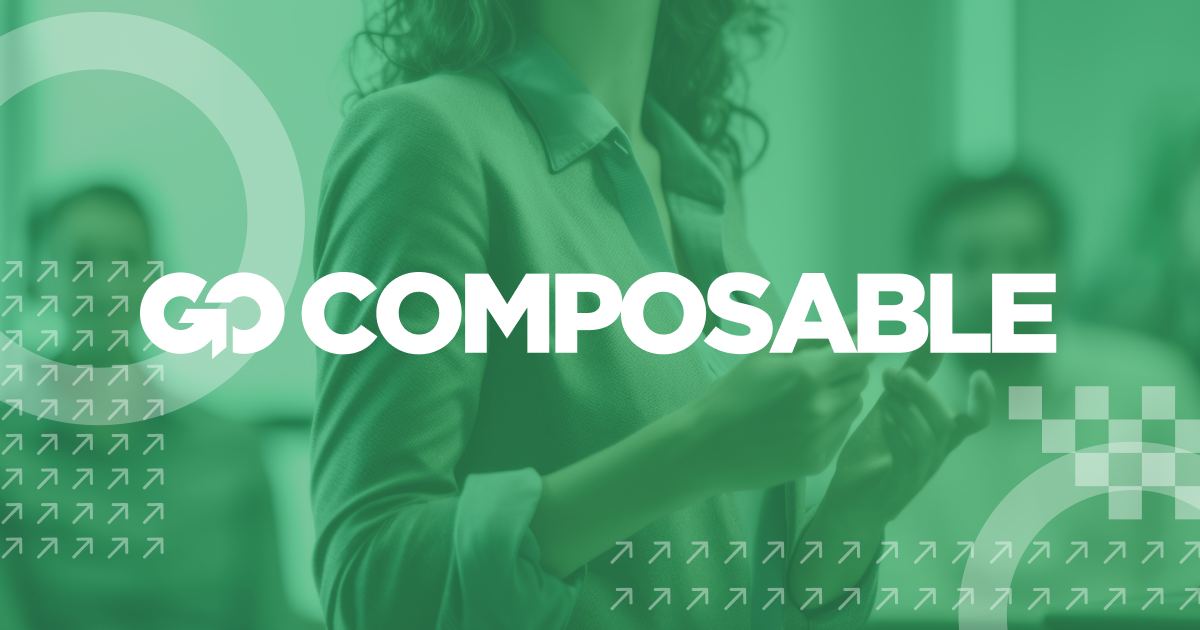
Have you been hearing about MACH lately? It’s currently one of the biggest buzzwords out there — and for good reason. The acronym has spread like wildfire throughout the digital world. Endorsed by analysts and IT experts; frowned upon by not-quite-as-tech-savvy business folks; initially belittled, now heavily embraced by the monoliths who are trying to MACH-wash their offerings and avoid extinction.
But what exactly is MACH architecture? How does it compare to monolithic platforms? And where does composable fit into all of this? If you’ve been wondering lately, keep reading. You’re about to get the inside scoop.
What is MACH architecture?
MACH stands for Microservices, API-first, Cloud-native, and Headless. Let’s look at each individual term.
Microservices: Microservices bring together loosely coupled, independently deployable small components or "services" to compose a more integrated application. They are exposed via well-defined APIs as the communication method between frontends and backends. They deliver faster responses, are more reliable, and can be deployed more frequently.
API-first: Through APIs, best-of-breed components can be combined into a custom application built for specific business needs.
Cloud-native: Being cloud-native in MACH architecture means leveraging cloud-based infrastructure and services, resulting in significant cost advantages by avoiding the high costs of maintaining on-premises infrastructure, such as hosting, site acceleration, security and uptime.
Headless: Headless describes the decoupling of the front end from the back end. The front end can be anything customer-facing, from a web shop to social media to mobile apps. The backend is the layer where all the systems, processes and tools run to handle operations, including product information management, checkout and more.
Headless vs composable vs MACH
Headless is all about decoupling the front end and the back end so they can operate independently and achieve higher flexibility and agility. Nowadays, you see many legacy platforms claiming to be headless when really all they offer is a few APIs. Don’t be fooled. If a monolithic, non-microservices-based architecture is lurking behind the scenes, you won’t be able to unlock the freedom that a true MACH architecture has to offer.
Composable is yet another term that is being thrown around, many times used interchangeably with MACH. They are not the same though. Composable is a modular development approach and enables brands to “compose” unique customer experiences by plugging best-of-breed building blocks like cart, checkout and payments into their technology stack. Those components, though, are not required to be MACH-compliant.
Assembling a composable architecture using MACH-compliant building blocks is the only way to truly embrace the power of composable technology.
Essentially, composable takes a step beyond headless. It breaks down the entire platform into individual components that can be independently plugged in, customized and even replaced. That allows companies to integrate curated best-of-breed components to tailor their technology stack and, consequently, the customer experience.
What are the benefits of MACH technology?
MACH-based architecture provides the technical backbone to make businesses future-fit. It creates an environment in which every component is pluggable, scalable, replaceable and can be continuously improved through agile development to meet the ever-evolving business requirements.
When combined, the technologies that provide the foundation of MACH architecture provide remarkable advantages:
- Flexibility: Decoupling of frontend and backend allows for more agile development and deployment.
- Scalability: Auto-scaling ensures seamless handling of traffic peaks with zero downtime. No more Black Friday outages!
- Speed: Allows for faster iteration and testing, and the cloud provides instant provisioning and deployment of resources.
- Lower costs: Reduces the need for costly and frequent investments in hardware, software and infrastructure.
- Resilience: Reduces the risk of application downtime; has built-in redundancy and failover mechanisms.
If you want to go further, faster, a MACH architecture will get you there.
MACH architecture vs. monoliths
The time of the monolithic giants — think the likes of SAP, Oracle and Salesforce — is coming to an end. No monolithic platform can deliver the same speed, functionality and performance that a MACH architecture can deliver. What may seem like a blessing when you sign on with a monolith (you only buy once, with one contract and one point of contact) quickly becomes a curse if you want anything but the standard procedure.
Thinking about an innovative, unique customer experience? You’ll need to beg the monolith to create it for you, and chances are slim they will unless you’re the biggest customer in their portfolio.
With a MACH architecture, you are in the driver’s seat. You’ve got a brilliant idea for a thrilling new customer experience? Plug and play the best-of-breed solutions and watch your business thrive. With a monolith? Wait until the trend has passed to even get a response to your request.
Is your business ready for MACH?
Now that I’ve gotten you curious about the whole MACH thing, how do you know if MACH is right for your business? Start with an assessment of your current systems, processes and goals. Then, check the statements below. If you agree with any or all of them, it is time to make a move.
- Your current system is holding you back because it is too inflexible and slow to move at the speed necessary to keep up with shifting customer expectations and industry trends.
- You're looking to decrease TCO and increase ROI as you are currently paying for resources you don't need.
You want to improve customer experiences, but you are struggling to provide cohesive and personalized omnichannel experiences.
- You want to stay ahead of the competition by staying agile and responsive to market demands, but you're finding you can't keep up with your competitors.
The bottom line
In today’s uncertain market conditions, the only constant is change. Moving to a MACH architecture will not only make your business more agile and adaptable, it also reduces the total cost of ownership (TCO) often associated with outdated pricing and licensing models employed by the monoliths.
A modern tech stack is key to making your business future fit. Make the move from monolith to MACH. Tailor your tech stack to your individual business needs and create that unique customer experience that will put you ahead of your competition — time and again.
About the author | |
|---|---|
 |
|
You may find interesting
Learn how to drive business forward and build better customer experiences.